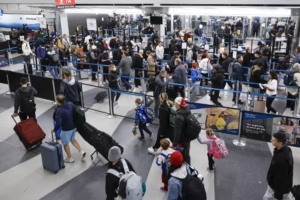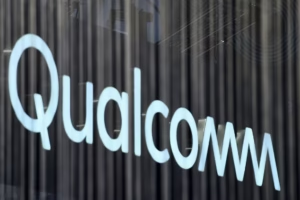The chart implies a link between the rise of AI and a dramatic decline in U.S. job openings. But one economist says that interpretation misses the mark.
A viral chart is giving viewers the wrong impression about the relationship between the labor market and the rise of AI, one economist said.
A viral chart that has been bouncing around social-media platforms like X over the past few weeks has caught the attention of investing professionals and amateur observes alike.
On the surface, it purports to show a link between the rise of artificial intelligence and the increasingly precarious state of the U.S. labor market.
But TS Lombard economist Dario Perkins said inferring anything of value from the chart would actually be a mistake. Some pundits might be calling it “the most important chart in the world,” Perkins said, but in reality, it is closer to “the stupidest chart in the world.”
“There is a chart that is all over social media as proof of the ‘K-shaped’ economy in the U.S., and the ‘huge impact’ AI is supposedly having on the U.S. labour market. I see it at least 20 times a day,” Perkins said in a report shared with MarketWatch on Thursday.
The chart, shown below, plots the trajectory of the S&P 500 against the number of job openings reported by the Labor Department’s monthly job openings and labor turnover survey. To some, it could look like evidence that the rise of AI – which has propelled the U.S. stock market to dizzying heights – has coincided with a deterioration in the labor market.
But this interpretation is flawed in a few important ways. Most analysts agree that AI technology was first made available to the masses in November 2022, when OpenAI first introduced ChatGPT to the public. But, as Perkins pointed out, the peak in job openings actually occurred months earlier, in March 2022, at more than 12 million jobs. That just so happened to be the month that the Federal Reserve kicked off its campaign of interest-rate hikes to try and tamp down inflation.
Another problem with this perceived relationship: Job openings started to stabilize in April 2024, just as ChatGPT traffic was really beginning to take off, Perkins said.
Rather than AI-related disruptions, it is more likely that the chart simply reflects some of the economic distortions caused by the COVID-19 pandemic. Perkins argued that, rather than jobs being destroyed, job openings were simply being converted into actual jobs as supply-demand dynamics in the labor market came back into balance. This was largely the result of more workers entering the labor force, as the chart below, produced by Perkins, shows.
Similar patterns can be found in labor-market data from around the world, another sign that the pandemic, rather than AI, was likely behind this relationship, Perkins pointed out.
The degree to which AI is already impacting the labor market continues to be debated by economists. Although a paper published by a trio of researchers at Stanford University found evidence that employment for young Americans had softened in fields where the work could be more easily automated by AI.





